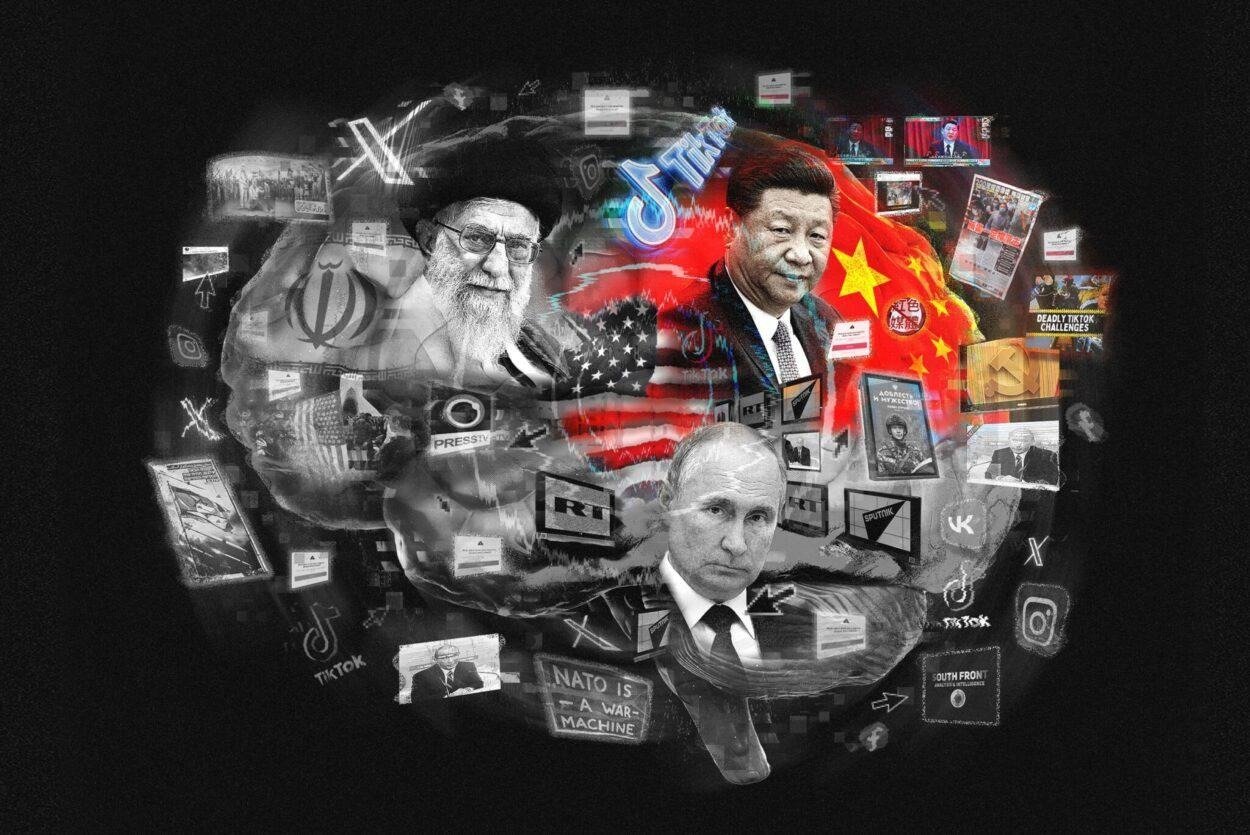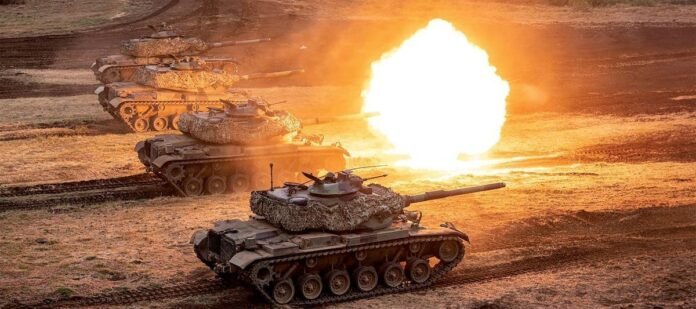This question, “Can wars be won without being fought?” often intrigues military thinkers and strikes at the very heart of strategy, diplomacy, and the evolving nature of power. From Sun Tzu’s ancient wisdom to 21st-century hybrid conflicts, nations have often sought to achieve political and military objectives without a direct confrontation. War, after all, is not only about combat — it is the continuation of politics by other means, as Carl von Clausewitz famously argued. Yet the modern world increasingly demonstrates that wars can indeed be “won” through psychological dominance, economic strangulation, cyber warfare, and information manipulation — mechanisms that achieve strategic goals without large-scale kinetic engagement. The latest charade of President Trump using tariffs as an instrument of coercion has been quite a revelation.
This article explores the idea through a historical and analytical lens — tracing its philosophical origins, examining key historical precedents, and assessing its contemporary relevance in the age of hybrid and cognitive warfare.
The Philosophical Foundations: The Art of Winning Without Fighting
Wars can be won without being fought through the strategic use of political, economic, and psychological tools that erode an opponent’s will and capacity to resist. While armed conflict is the traditional benchmark for victory, an analytical perspective reveals that the highest form of military skill, according to ancient military philosopher Sun Tzu, is to “subdue the enemy without fighting”. This reflects a shift in modern warfare towards “grey zone” tactics, where the nature of victory itself has evolved beyond the Clausewitzian concept of destroying the enemy’s armed forces.
Sun Tzu and the Ancient Doctrine. The earliest articulation of this idea comes from Sun Tzu’s The Art of War (circa 500 BCE). He declared, “The supreme art of war is to subdue the enemy without fighting.” For Sun Tzu, warfare was as much psychological and political as physical. The ideal general triumphed by deception, alliance-building, and superior intelligence. Military victory, in his view, was a failure of diplomacy and strategy — it meant that subtler tools of influence had been exhausted.
Kautilya and the Arthashastra. Parallel ideas appear in Kautilya’s Arthashastra (4th century BCE), which advised rulers to use diplomacy, espionage, subversion, and economic manipulation to defeat adversaries without entering battle. Kautilya’s “four upayas” — sama (conciliation), dana (gifts), bheda (division), and danda (force) — imply that the use of force was a last resort, to be employed only when all other instruments of statecraft had failed.
Clausewitz and the Political Utility of War. Moving forward to the 19th century, Clausewitz’s On War (1832) emphasised that war was the continuation of politics by other means. Implicitly, this means that if political objectives can be achieved without violence — through coercion, deterrence, or diplomacy — then the “war” has already been won without fighting. This understanding later shaped Cold War deterrence theory and modern strategic thought.
Historical Examples of Wars Won Without Combat
The Cold War (1945–1991): A Paradigm of Indirect Victory. Perhaps the greatest example of a “war won without being fought” is the Cold War. The United States and the Soviet Union engaged in a geopolitical, ideological, and technological struggle lasting nearly half a century, without ever engaging in direct conventional warfare. The United States “won” the Cold War not through battlefields but through economic superiority, ideological appeal, and strategic containment. The collapse of the Soviet Union in 1991 resulted from internal economic stagnation, ideological exhaustion, and the inability to compete with the US in the arms and technological race. This outcome validated Sun Tzu’s dictum: the enemy was subdued without direct combat.
The outcome of the Cold War is a great example of winning the war without a direct fight. The United States and the Soviet Union engaged in a struggle, without conventional warfare, for nearly half a century. The US eventually won through economic superiority, ideological appeal, and strategic containment, until the collapse of the Soviet Union in 1991
Key instruments of this non-kinetic victory included:
-
Nuclear deterrence, which prevented large-scale war.
-
Economic warfare, including trade restrictions and technological denial regimes.
-
Cultural and ideological influence, through media, education, and the appeal of liberal democracy.
-
Psychological operations, such as propaganda and strategic signalling (e.g., Reagan’s “Star Wars” missile defence programme).
The Fall of the Berlin Wall (1989): The Triumph of Ideology. The collapse of the Berlin Wall was more than a political event; it symbolised the victory of one world order over another without a shot being fired. The transformation of Eastern Europe, resulting from internal dissent, ideological subversion, and Western support for pro-democracy movements. The Soviet bloc dissolved under the weight of its contradictions — defeated by ideas rather than armies.
The British Empire and the “Great Game”. During the 19th century, the British Empire often expanded its influence without fighting, particularly in regions like the Middle East and Central Asia. Through alliances, intelligence networks, and economic dependency, Britain secured geopolitical advantages. The “Great Game” with Russia in Central Asia was as much a battle of espionage and diplomacy as of military confrontation. The British mastery of indirect rule exemplifies the concept of controlling without conquest.
Japan’s Economic Power in the 1980s. Post-World War II Japan provides another example. Bound by Article 9 of its Constitution to renounce war, Japan nonetheless achieved global influence through economic might, technology, and trade. In the 1980s, Japan became the world’s second-largest economy, dominating sectors from automobiles to electronics. It demonstrated that a nation can assert power, shape global norms, and “win” strategically — without ever fighting a war.
China’s Contemporary “War Without Fighting”. In recent decades, China’s rise has exemplified strategic patience and psychological warfare. Through the Belt and Road Initiative (BRI), Beijing has extended its influence across Asia, Africa, and Europe using economic leverage, debt diplomacy, and infrastructure projects. Its “Three Warfares” doctrine — psychological warfare, media warfare, and legal warfare — aims to shape perceptions and rules of engagement before a single shot is fired.
The collapse of the Berlin Wall symbolised the victory of one world order over another without a shot being fired. Eastern Europe transformed as a result of internal dissent, ideological subversion, and Western support for pro-democracy movements. The Soviet bloc dissolved under the weight of its contradictions, defeated by ideas rather than armies
The Modern Era: Hybrid, Cognitive, and Information Wars
Hybrid Warfare: Blurring Peace and War. The 21st century has seen the evolution of hybrid warfare, where states combine conventional military threats with cyber operations, disinformation, and economic coercion to achieve objectives without open war. Russia’s actions in Crimea (2014) and Ukraine (before 2022) demonstrated this approach: use of proxy forces, cyberattacks, propaganda, and legal ambiguity to create “facts on the ground” without formally declaring war. Hybrid warfare seeks to exploit the “grey zone” — the space between peace and war — where deniability and narrative control are as valuable as military strength. In such contexts, victory is defined not by territory conquered, but by narratives controlled and perceptions shaped.
Cyber Warfare and Digital Dominance. In cyberspace, war is literally fought without fighting. Attacks on financial systems, power grids, or communication networks can cripple an enemy’s economy or military infrastructure without a single soldier crossing borders. The Stuxnet virus (2010) — allegedly developed by the US and Israel to sabotage Iran’s nuclear programme — is a striking example of a digital “attack” that achieved strategic results without physical conflict. Similarly, cyber espionage and data theft have become instruments of state power, allowing nations to gain technological, military, or diplomatic advantages quietly and effectively.
Economic and Trade Warfare. Economic sanctions, technological restrictions, and supply-chain disruptions are now powerful tools of modern conflict. The US-China trade war (since 2018 to the present) is a case in point — an ongoing battle for technological supremacy fought through tariffs, export bans, and financial coercion, rather than missiles or tanks. The freezing of Russian foreign assets and exclusion from SWIFT after its 2022 invasion of Ukraine highlights how financial instruments have become weapons of war — deterring and punishing aggression through economic isolation.
Information and Psychological Warfare. In the information age, control of narratives can determine victory or defeat. Social media manipulation, fake news campaigns, and influence operations can destabilise societies without firing a shot. For instance, the alleged Russian interference in the 2016 US elections demonstrated the potency of psychological warfare through digital media.
Nations now compete to dominate not only land and sea but also the cognitive domain — the human mind. Winning wars today means shaping how people perceive reality.

Case Study: India’s Non-Kinetic Victories
India’s strategic culture, influenced by Kautilya and the doctrine of restraint, provides several examples of victories without direct war:
1971 Bangladesh Liberation: Though the war was kinetic, India’s prior diplomatic isolation of Pakistan and support to the Mukti Bahini created strategic conditions for victory before the first shot was fired.
Operation Meghdoot (1984): India’s pre-emptive occupation of the Siachen Glacier was achieved without a major battle — through foresight, intelligence, and timing.
Doklam Standoff (2017): Through diplomatic firmness and psychological signalling, India managed to deter Chinese expansionism without actual combat.
Chabahar Port and International Alliances: India’s strategic engagement in Iran and the Indian Ocean reflects a long-term approach to geopolitical competition through connectivity, trade, and partnerships — tools of peace that yield strategic depth.
Force projection as a form of deterrence is the ability of a state to sustain military power far from its own territory to influence an adversary’s decision-making and subdue it without a direct military confrontation. This strategy achieves its goal by creating a credible threat of unacceptable costs, persuading an enemy that the risks of hostile action outweigh any potential benefits
Force Projection as Deterrence to Win the War of Minds
Force projection as a form of deterrence is the ability of a state to deploy and sustain military power far from its own territory to influence an adversary’s decision-making and subdue it without a direct military confrontation. This strategy achieves its goal by creating a credible threat of unacceptable costs, persuading an enemy that the risks of hostile action outweigh any potential benefits. This approach aligns with the principle from ancient Chinese strategist Sun Tzu, “The supreme art of war is to subdue the enemy without fighting”. The three main ingredients are capability, communication and credibility. Therefore, India’s frequent testing of missiles is to showcase its capability to its adversaries and bring up a strong narrative for deterrence.
The Ethical and Strategic Paradox
Winning wars without fighting raises moral and strategic questions. Does non-kinetic victory make war more acceptable or perpetual? Economic sanctions and cyberattacks often hurt civilians more than leaders. Information warfare erodes trust in truth itself, blurring lines between defence and aggression. As power becomes diffuse and invisible, accountability diminishes.
Moreover, the absence of visible conflict can make competition more insidious and less resolvable. The Cold War never “ended” in a conventional sense; it merely morphed into new forms of rivalry. Thus, wars without fighting may never truly end — they simply mutate.
Winning wars without fighting raises moral and strategic questions. Does non-kinetic victory make war more acceptable or perpetual? Economic sanctions and cyberattacks often hurt civilians more than leaders. Information warfare erodes trust in truth itself, blurring lines between defence and aggression. As power becomes diffuse and invisible, accountability diminishes
Conclusion
Can wars be won without being fought? History answers with a resounding yes — but with caveats. The most enduring victories have often been achieved not through annihilation but through superior strategy, patience, and influence. From Sun Tzu’s precepts to modern hybrid warfare, the essence of victory lies in outthinking the adversary rather than outgunning them.
Yet, as tools of conflict evolve — from armies to algorithms — the moral and strategic challenge deepens. The future of warfare will likely be one where battles are invisible, fought in cyberspace and human minds, and where the victors may not even appear to be fighting.
True strategic mastery, therefore, still lies in achieving peace through strength, deterrence, and perception — proving that the most powerful wars are indeed those that are won before they are fought.
-The author retired as Major General, Army Ordnance Corps, Central Command, after 37 years of service. A management doctorate and expert on defence modernisation, he is the author of four books, including the Amazon bestseller “Breaking the Chinese Myth,” and a frequent media commentator. He is affiliated with several leading defence and strategic studies institutions in New Delhi. The views expressed are of the writer and do not necessarily reflect the views of Raksha Anirveda






